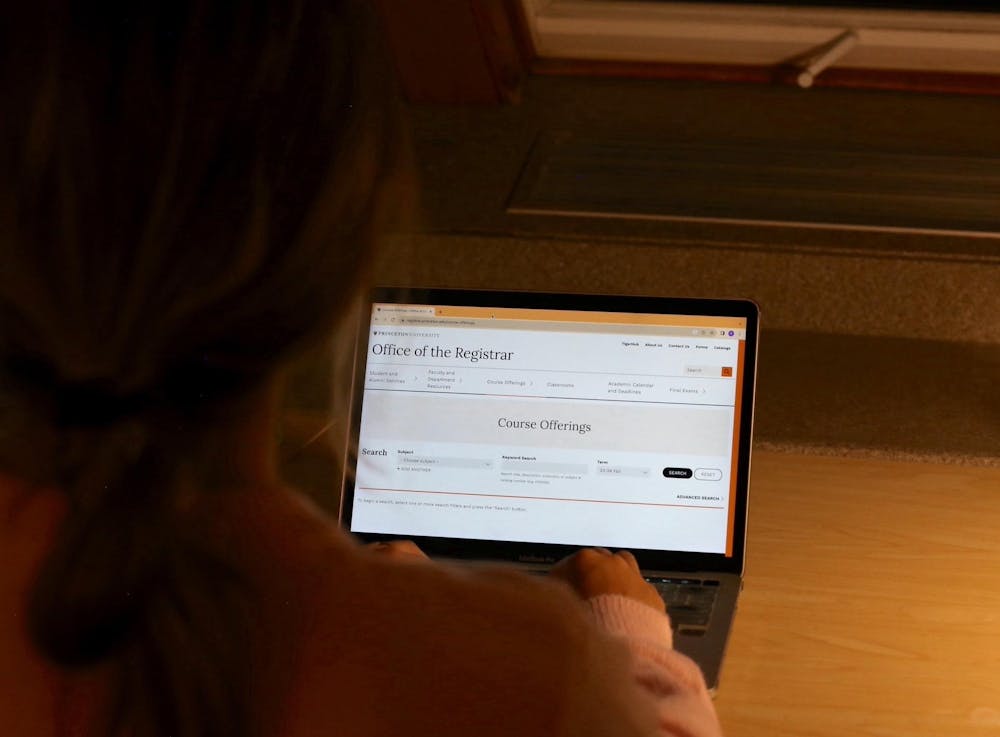Following trends of over-enrollment in introductory and popular courses, several courses are adjusting their locations or offering multiple sections for smaller classes. While accommodations can allow courses to preserve seminar-style learning in small classes, they may also lead professors to alter their traditional teaching methods in some cases.
Enrollment trends followed those of last semester, where many introductory courses and popular classes in creative writing were met with high demand for a limited number of seats.
CHM201: General Chemistry I, an introductory course, was formerly taught in a lecture hall in Frick Chemistry Laboratory. The hall includes a lab behind the blackboard wall, where demonstrators can easily store materials for live demonstrations of course concepts. Now, the course has been moved to McCosh 50, where live demonstrations can no longer be held.
Michael Hecht, a professor of CHM201, told The Daily Princetonian, “Now, I do no demonstrations. I show videos on the screen.”
Hecht noted that this lecture hall location change is not conducive to his instruction: “This issue is that when I teach chemistry — particularly an intro chemistry course — the quality of teaching is not just telling people but showing people.”
In response to the change in CHM201 lecture halls, University spokesperson Ahmad Rizvi wrote to the ‘Prince:’ “McCosh 50 was the best option at the time classrooms had to be assigned, and the assignment was made in consultation with the department.”
Meanwhile, courses in creative writing have held onto their small class sizes by offering multiple sections of the same courses. Data collected by The Daily Princetonian shows that the creative writing program consistently has the most seats filled across the department, filling 95.3 percent of its seats this semester.

Professor Yiyun Li, Director of the Program in Creative Writing, noted that the small class sizes are integral to the experience of creative writing courses.
“It’s an intimate subject,” she said. “There are not many lectures. It’s more about students reading each other’s work, workshopping.”
In LCA101: Introduction to Art Making, students engage in two-week units across five different fields with different professors. This hands-on experience is one that Professors Stacy Wolf and Tess James say is only possible with a smaller group of students.
“That’s what’s important about it: That the students are making art — not sitting passively and learning about art, but they're actually doing it,” Wolf said. “It's hard to go above 35 [students] in the class and have an excellent experience, which we insist on.”

Professor AnneMarie Perl, who teaches ART100: An Introduction to the History of Art: Meanings in the Visual Arts, similarly described how the nature of her course in Art History poses constraints on class size. Given the ongoing construction of the Princeton University Art Museum (PUAM), in order to examine objects firsthand, classes must go to special collections or the off-site location of PUAM.
"Those rooms have caps, and we had to schedule those precepts far in advance,” said Perl.
Many students use TigerSnatch, a student-created app alert system, for classes that are in high demand. Tigersnatch allows students to receive email and text notifications when a spot opens in a full course. Courses with the most subscriptions on this app included LCA101: Introduction to Art Making, REL100: Religion and the Public Conversation, VIS213: Digital Photography, and a number of creative writing courses.
“I acknowledge [students’] frustration that there were so many people on the waiting list,” said Professor Jenny Wiley Legath, who teaches REL100. “I had 79 students who took the time to fill out the waiting list last spring. So that doesn't even count the incoming freshmen.”
Another popular course, according to TigerSnatch subscription data, is PSY254: Developmental Psychology. Professor Casey Lew-Williams estimated that about 80 to 90 students were added to the course waitlist and that, on occasion, students will receive a permission enrollment number when new spots become available.
Computer Science (COS), School of Public and International Affairs (SPIA), and Economics (ECO) are consistently the most declared concentrations every spring. Though SPI298, a gateway course into the major, saw an increase in demand, enrollment in other SPIA and COS courses were down this semester, while economics saw an increase in seats filled. The enrollment levels of all three departments were similar to the 75 percent overall course enrollment rate across the University, including writing seminars.
As class sizes have fluctuated within the past few years, course enrollment and the demand for classes in different departments continues to shift.
Isa Yip is a head News editor for the ‘Prince.’
Thomas Catalano is a contributing News writer for the ‘Prince.’
Senior News Writer Charlie Roth contributed reporting for this article.
Please send any corrections to corrections[at]dailyprincetonian.com.








